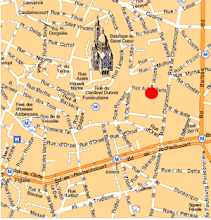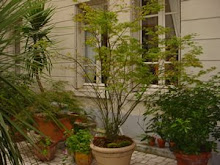Wednesday 23 July 2008
'A Midsummer Harvest of Bogus Trend Stories'
FROM SLATE
A Midsummer Harvest of Bogus Trend Stories
Drivel from the New York Times, the Washington Post, and the Boston Globe.
By Jack Shafer
The bogus trend story thrives thanks to the journalists who never let the facts get in the way when they think they've discovered some new social tendency. Take, for example, the story on Page One in today's New York Times titled "A Locally Grown Diet With Fuss but No Muss." Its first sentence declares, "Eating locally raised food is a growing trend."Although the piece collects anecdotes from San Francisco; New York City; Santa Fe, N.M.; Berkeley, Calif.; Mill Valley, Calif.; the Hamptons, N.Y.; and Vermont, it presents no evidence of a rise in the consumption of locally raised food. The closest the piece comes to quantifying its assertion that backyard gardens, "cow pooling" arrangements, and vegetable subscription programs are taking off is the fuzzy sentiment sourced to a Bellevue, Wash., research firm that for a "growing number of diners, a food's provenance is more important than its brand name," and a National Restaurant Association survey of 1,200 chefs working at chain restaurants or large food companies. The survey found that locally grown produce was the second-hottest food trend—right after bite-sized desserts.The Times was beaten to this bogus trend by sister paper the Boston Globe on June 3 in a piece titled "Amid City Streets, a Growing Trend: High Produce Prices Send Urbanites in Search of a Spade and Handful of Seeds." The Globe's proof that a million gardens are blooming comes from two companies: American Seed, which shipped 18 percent more vegetable seeds to dealers this year, and New England Seed, which says its vegetable seed sales are up about 20 percent from last year. But a one-year increase in seeds shipped or seeds sold by two companies doesn't necessarily constitute a trend. Has a competitor gone out of business, leaving the two firms with more market share? Were the frigging seeds even planted? Will they be brought to harvest? Or, as with every garden I've planted, will the sprouts fry themselves into ribbons of cellulose by August?The Globe story makes much about the waiting list of 41 names at one Boston area community garden. Is that up or down from last year? The story doesn't say. But if you're interested in long-term trends, please see this 2002 business story in the Times about the seed business, which indicates that the American backyard garden is a wisp of its former self. In that story, the research director of the National Gardening Association tells the Times that the average backyard garden shrank from nearly 800 feet to 100 feet over the last quarter-century, attributing the decline to the wider selection of fruits and vegetables—including organic—in supermarkets. Both the Globe and the Times dispatches capture more noise than data.
http://www.slate.com:80/id/2195763/
A Midsummer Harvest of Bogus Trend Stories
Drivel from the New York Times, the Washington Post, and the Boston Globe.
By Jack Shafer
The bogus trend story thrives thanks to the journalists who never let the facts get in the way when they think they've discovered some new social tendency. Take, for example, the story on Page One in today's New York Times titled "A Locally Grown Diet With Fuss but No Muss." Its first sentence declares, "Eating locally raised food is a growing trend."Although the piece collects anecdotes from San Francisco; New York City; Santa Fe, N.M.; Berkeley, Calif.; Mill Valley, Calif.; the Hamptons, N.Y.; and Vermont, it presents no evidence of a rise in the consumption of locally raised food. The closest the piece comes to quantifying its assertion that backyard gardens, "cow pooling" arrangements, and vegetable subscription programs are taking off is the fuzzy sentiment sourced to a Bellevue, Wash., research firm that for a "growing number of diners, a food's provenance is more important than its brand name," and a National Restaurant Association survey of 1,200 chefs working at chain restaurants or large food companies. The survey found that locally grown produce was the second-hottest food trend—right after bite-sized desserts.The Times was beaten to this bogus trend by sister paper the Boston Globe on June 3 in a piece titled "Amid City Streets, a Growing Trend: High Produce Prices Send Urbanites in Search of a Spade and Handful of Seeds." The Globe's proof that a million gardens are blooming comes from two companies: American Seed, which shipped 18 percent more vegetable seeds to dealers this year, and New England Seed, which says its vegetable seed sales are up about 20 percent from last year. But a one-year increase in seeds shipped or seeds sold by two companies doesn't necessarily constitute a trend. Has a competitor gone out of business, leaving the two firms with more market share? Were the frigging seeds even planted? Will they be brought to harvest? Or, as with every garden I've planted, will the sprouts fry themselves into ribbons of cellulose by August?The Globe story makes much about the waiting list of 41 names at one Boston area community garden. Is that up or down from last year? The story doesn't say. But if you're interested in long-term trends, please see this 2002 business story in the Times about the seed business, which indicates that the American backyard garden is a wisp of its former self. In that story, the research director of the National Gardening Association tells the Times that the average backyard garden shrank from nearly 800 feet to 100 feet over the last quarter-century, attributing the decline to the wider selection of fruits and vegetables—including organic—in supermarkets. Both the Globe and the Times dispatches capture more noise than data.
http://www.slate.com:80/id/2195763/
Labels:
Slate
Subscribe to:
Post Comments (Atom)





















1 comment:
Ian,
Your farm list has really grown. Did you ever get the description I sent of our farm?
Lori Skoog
Post a Comment